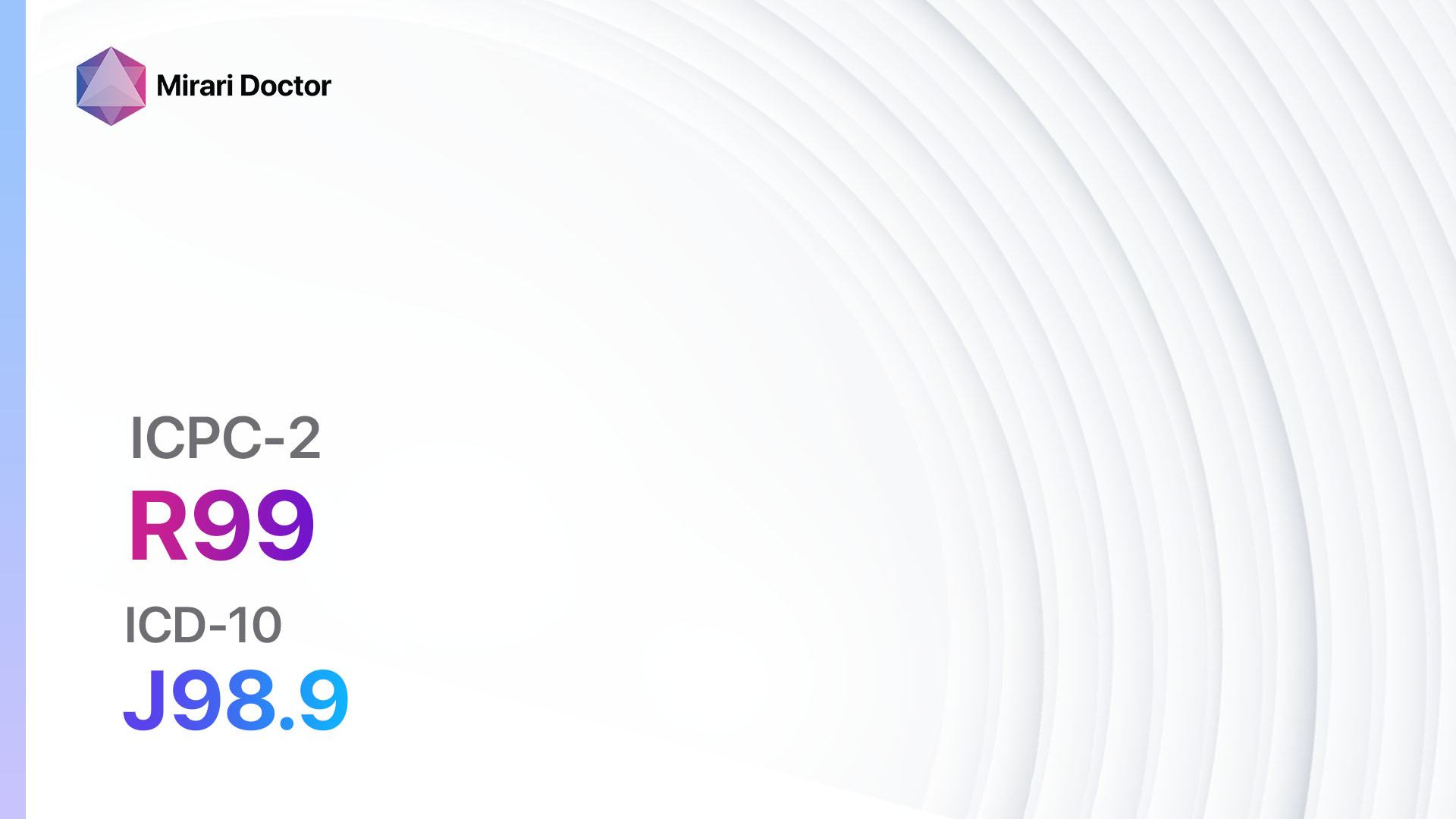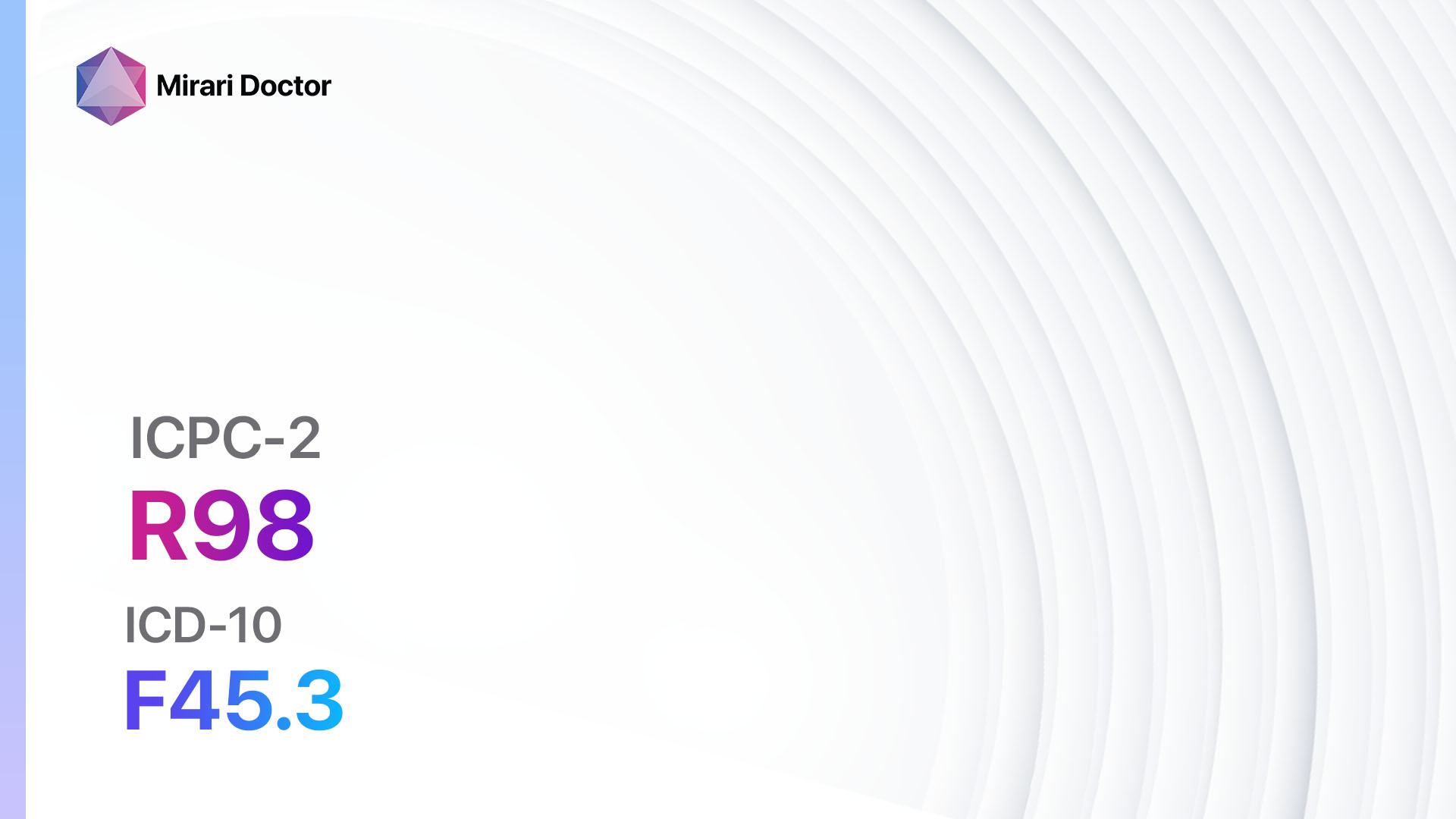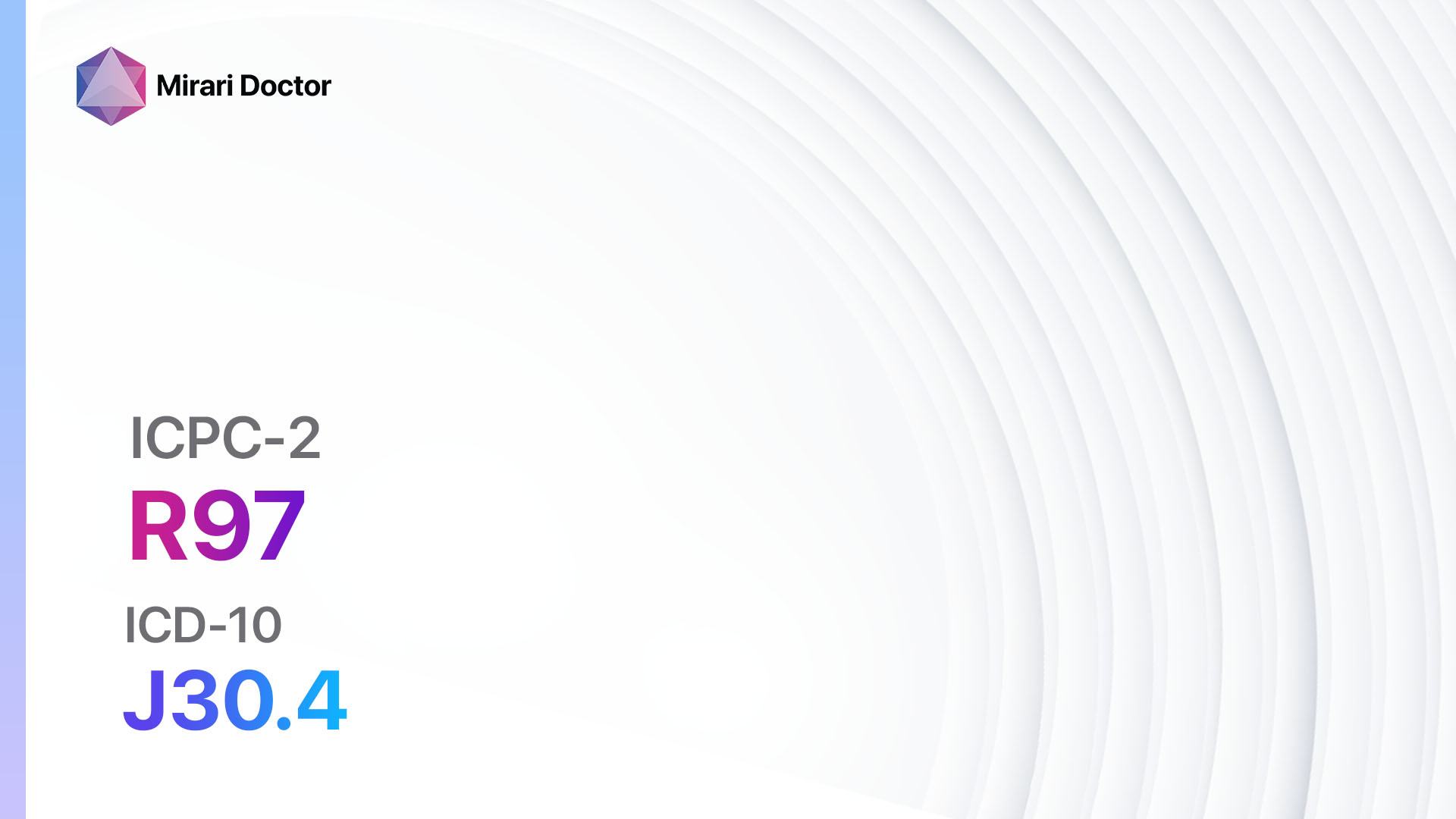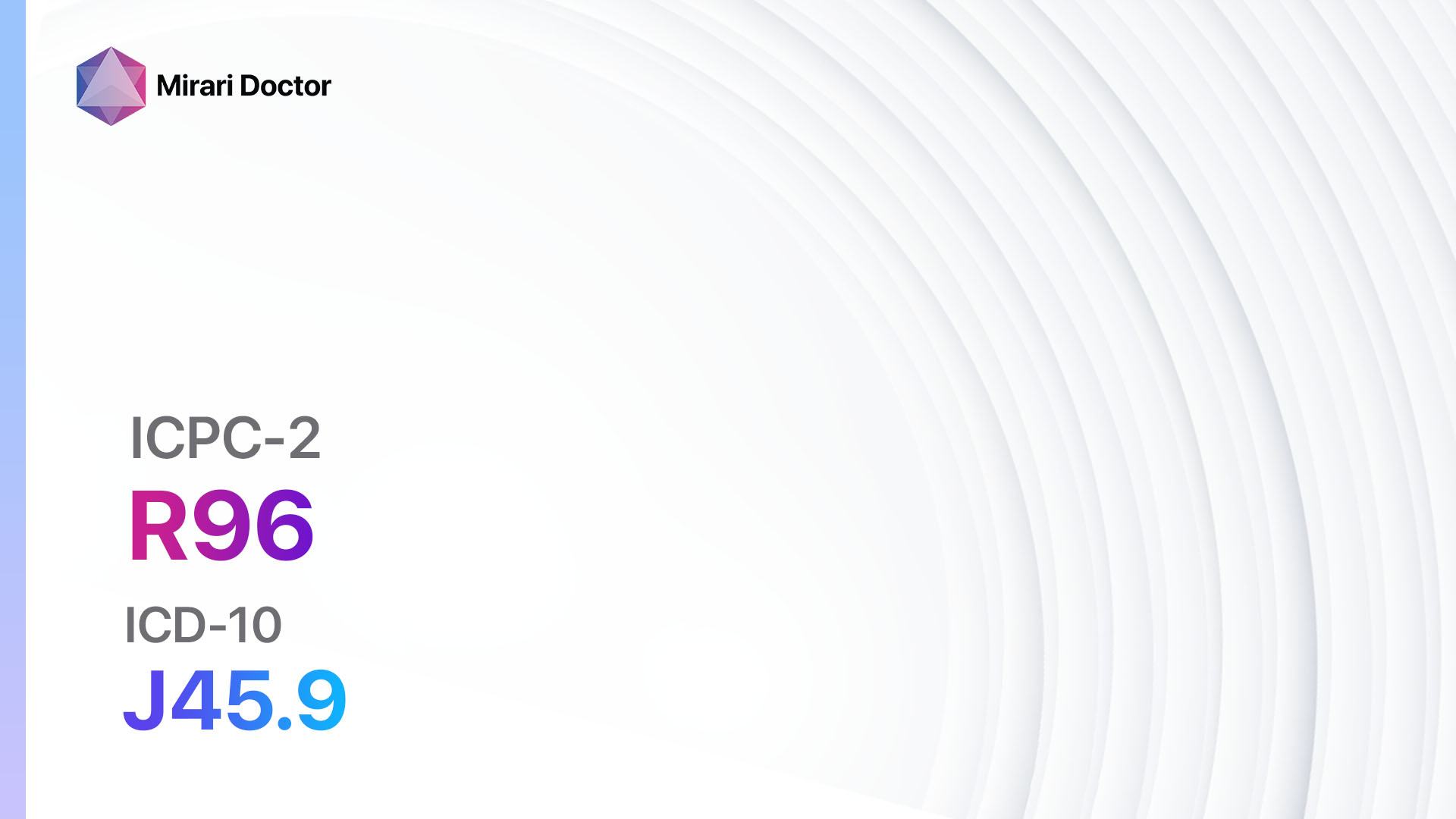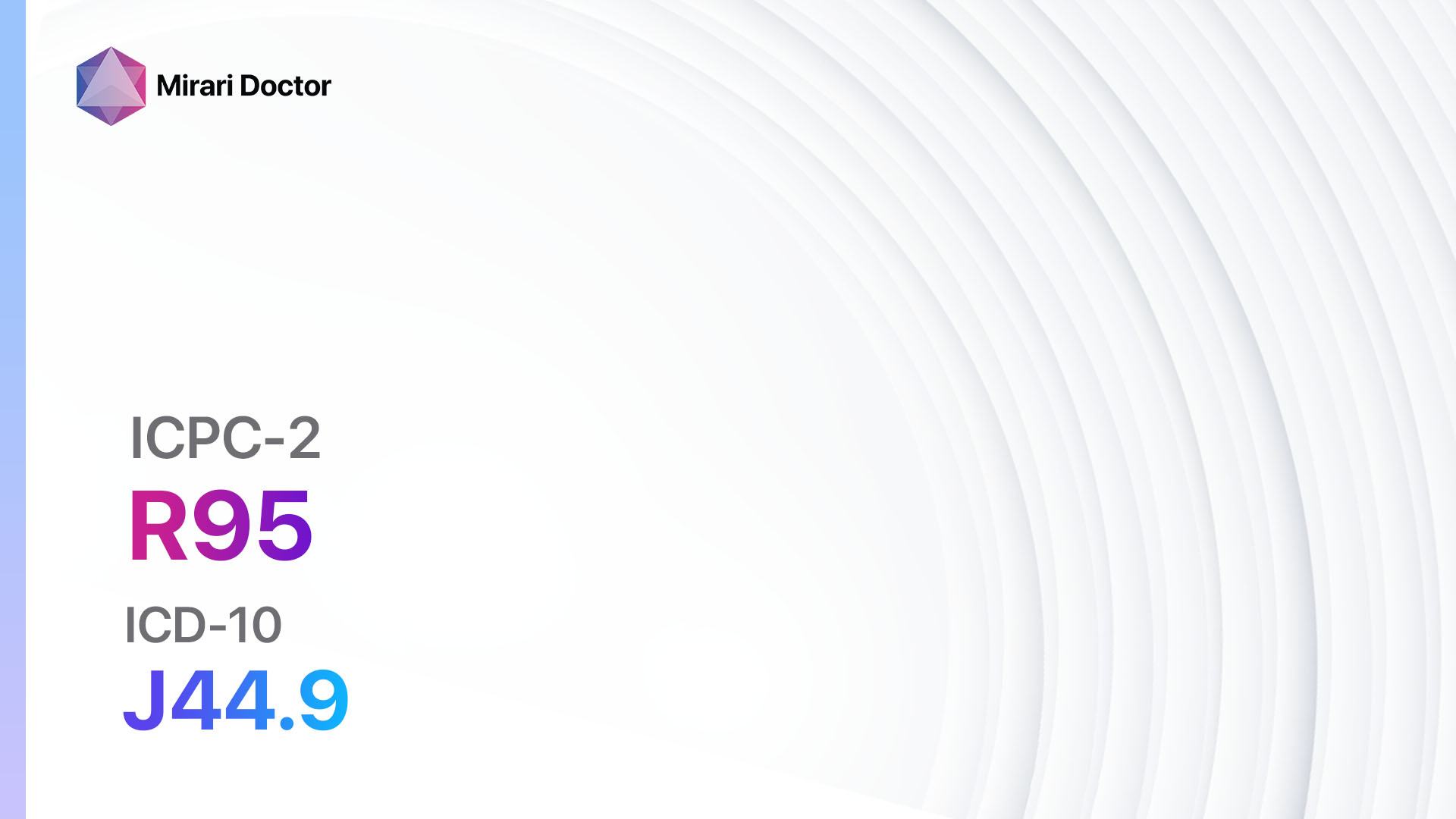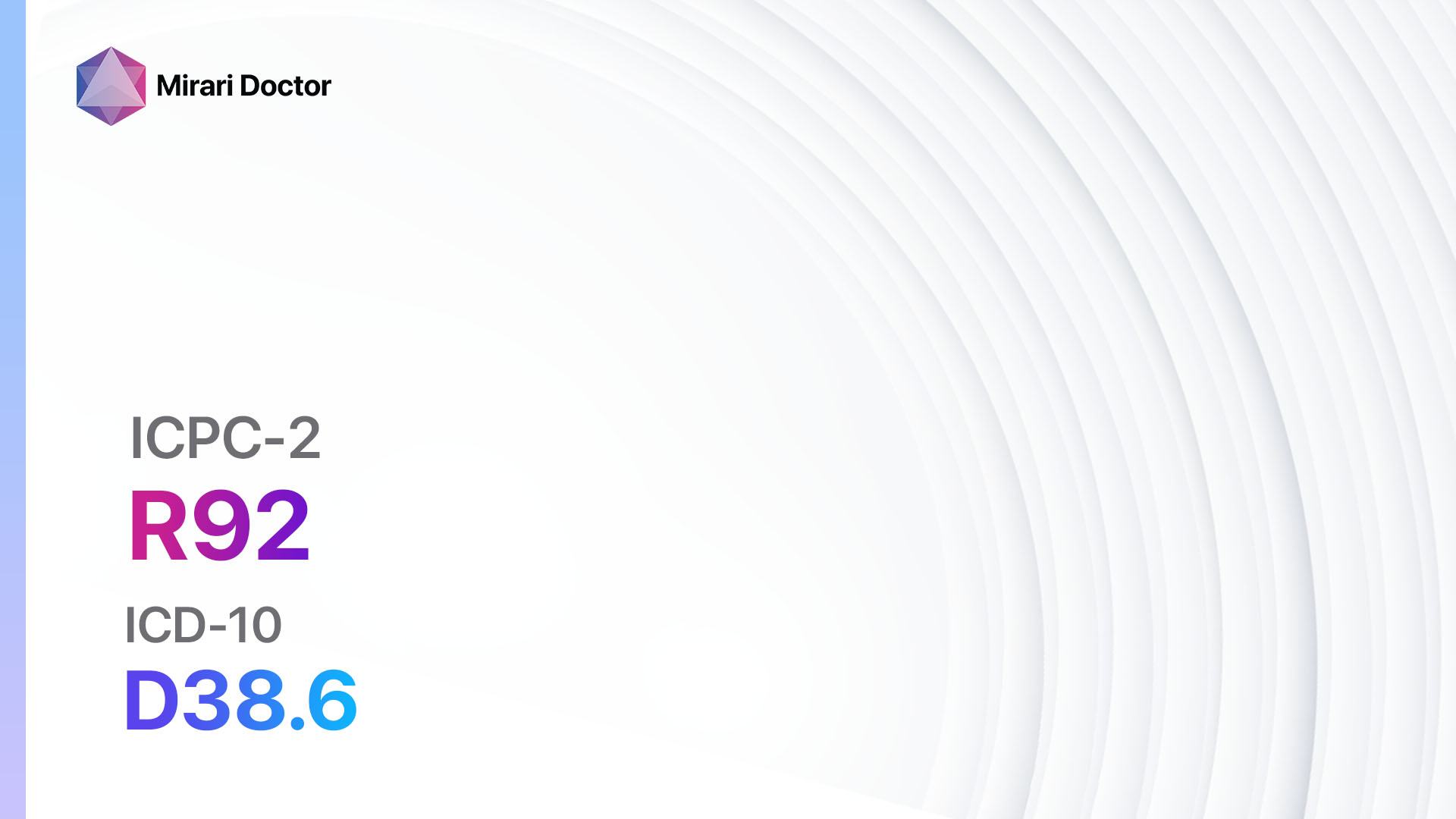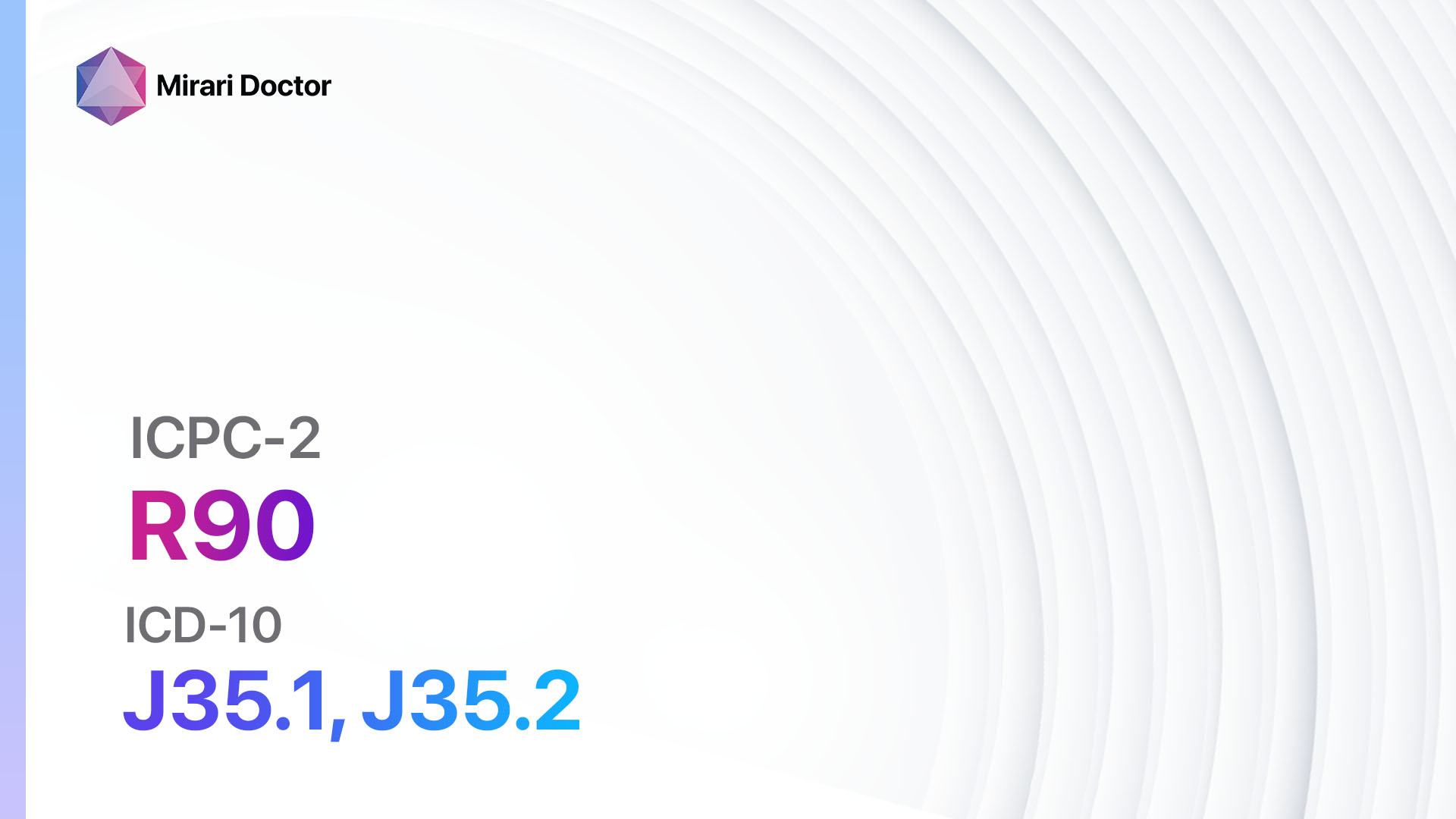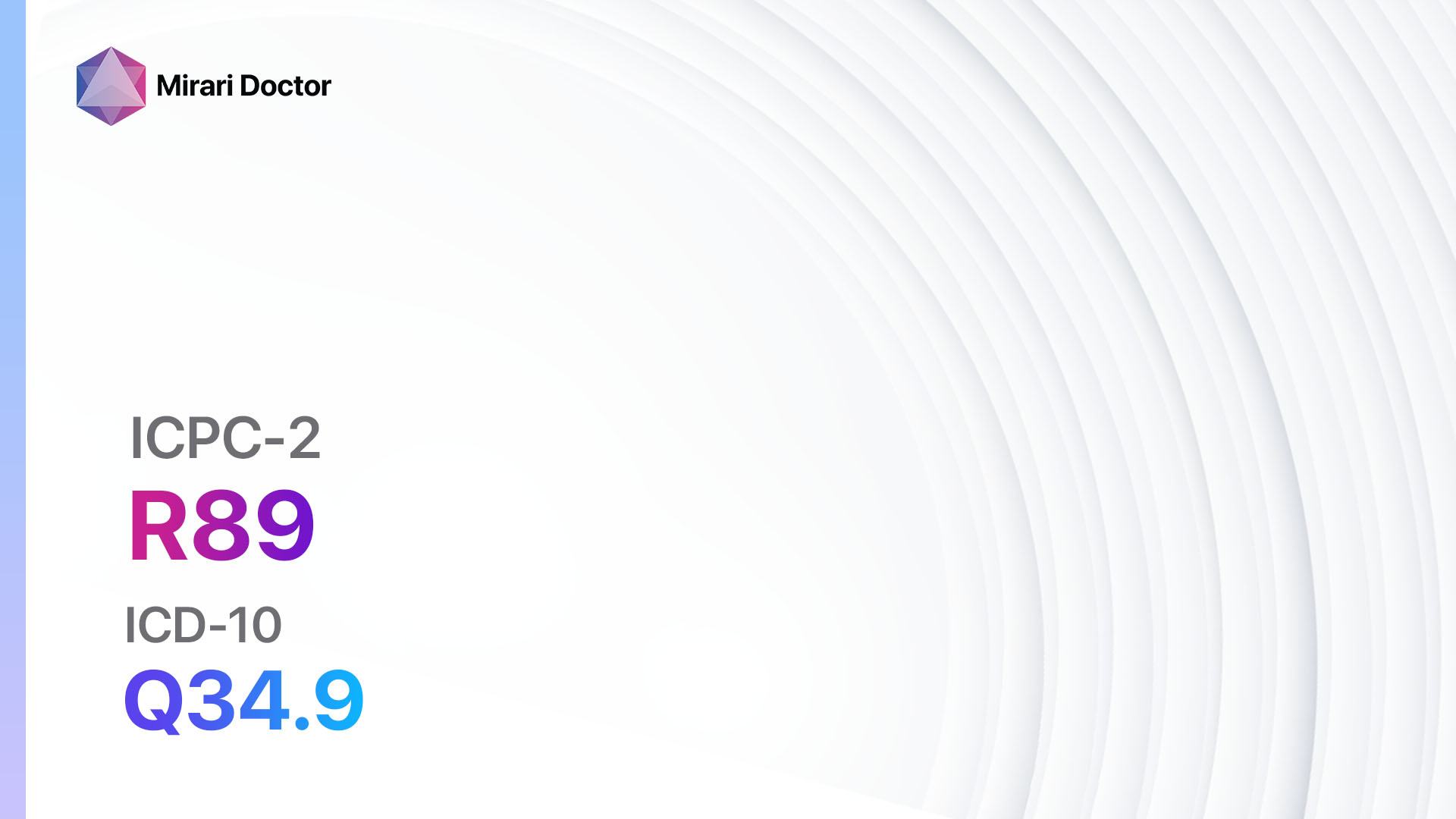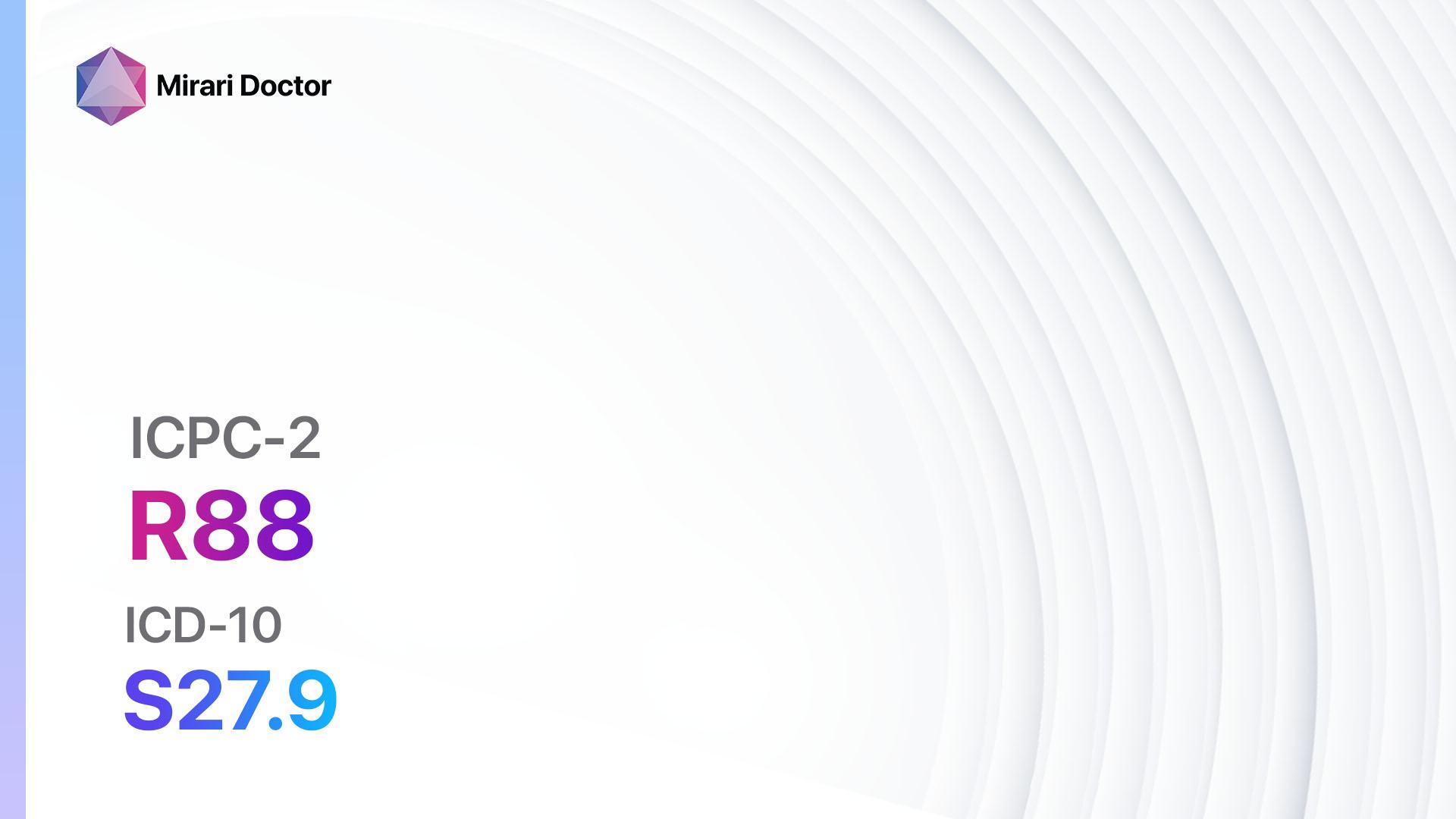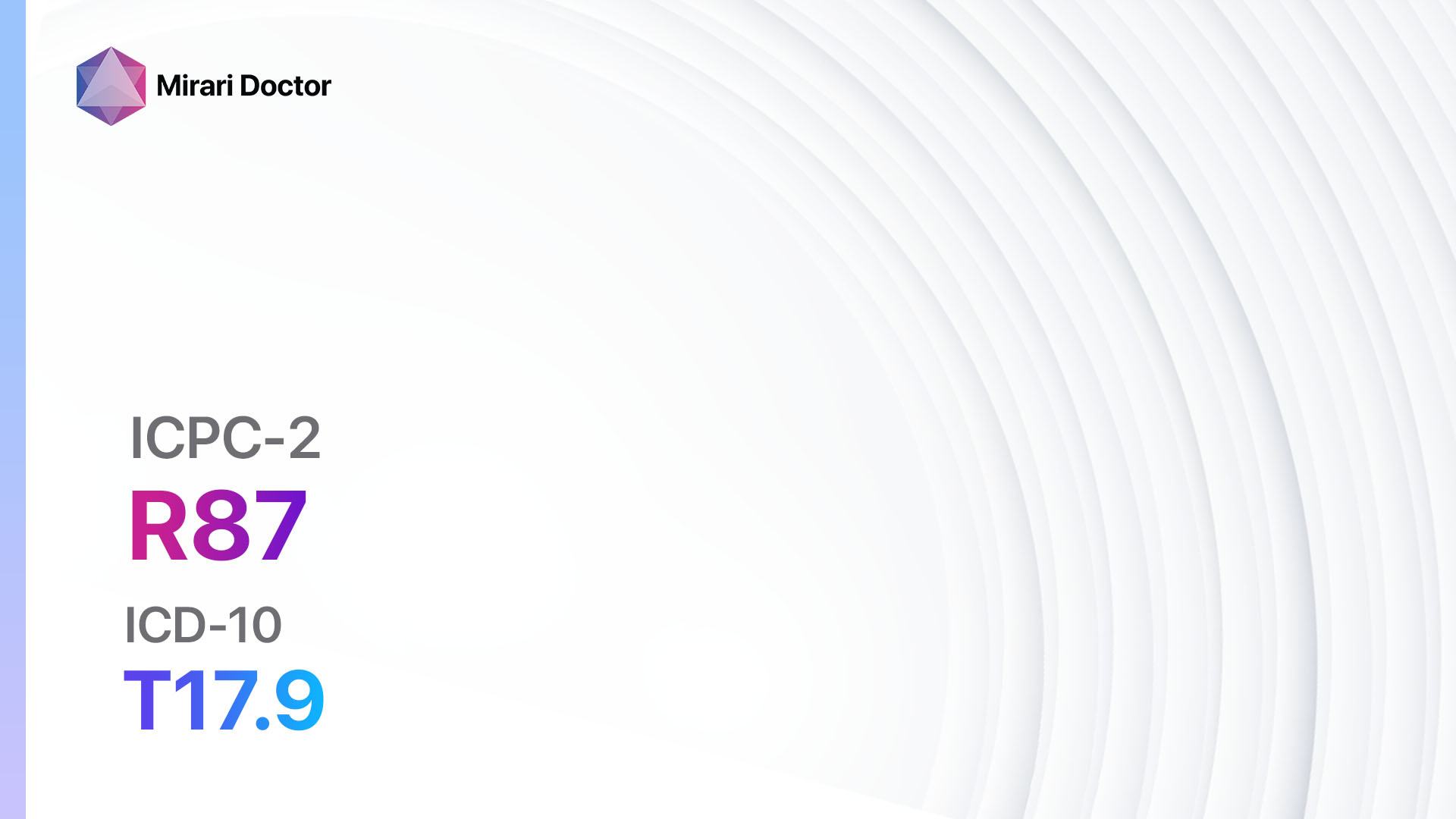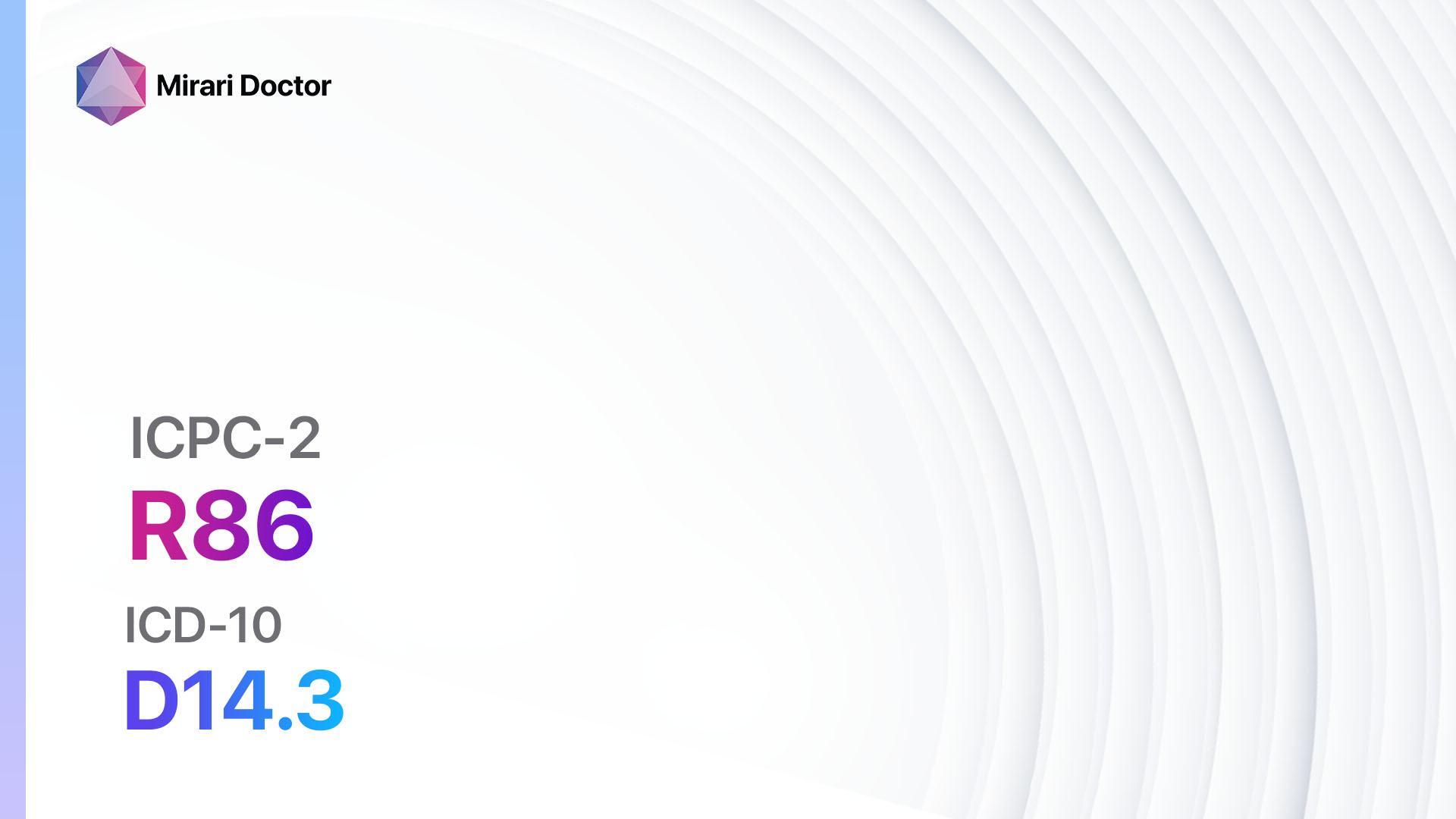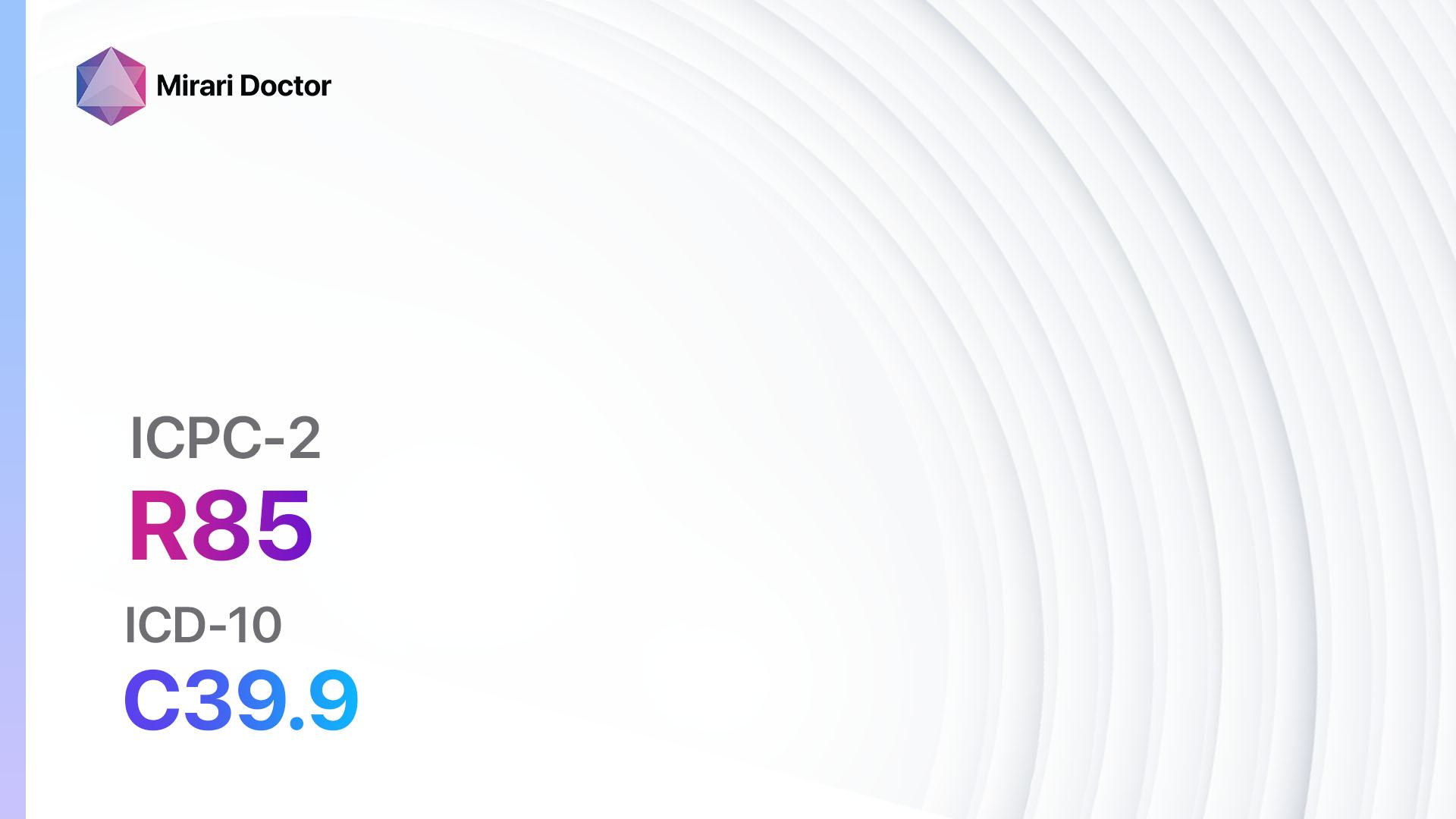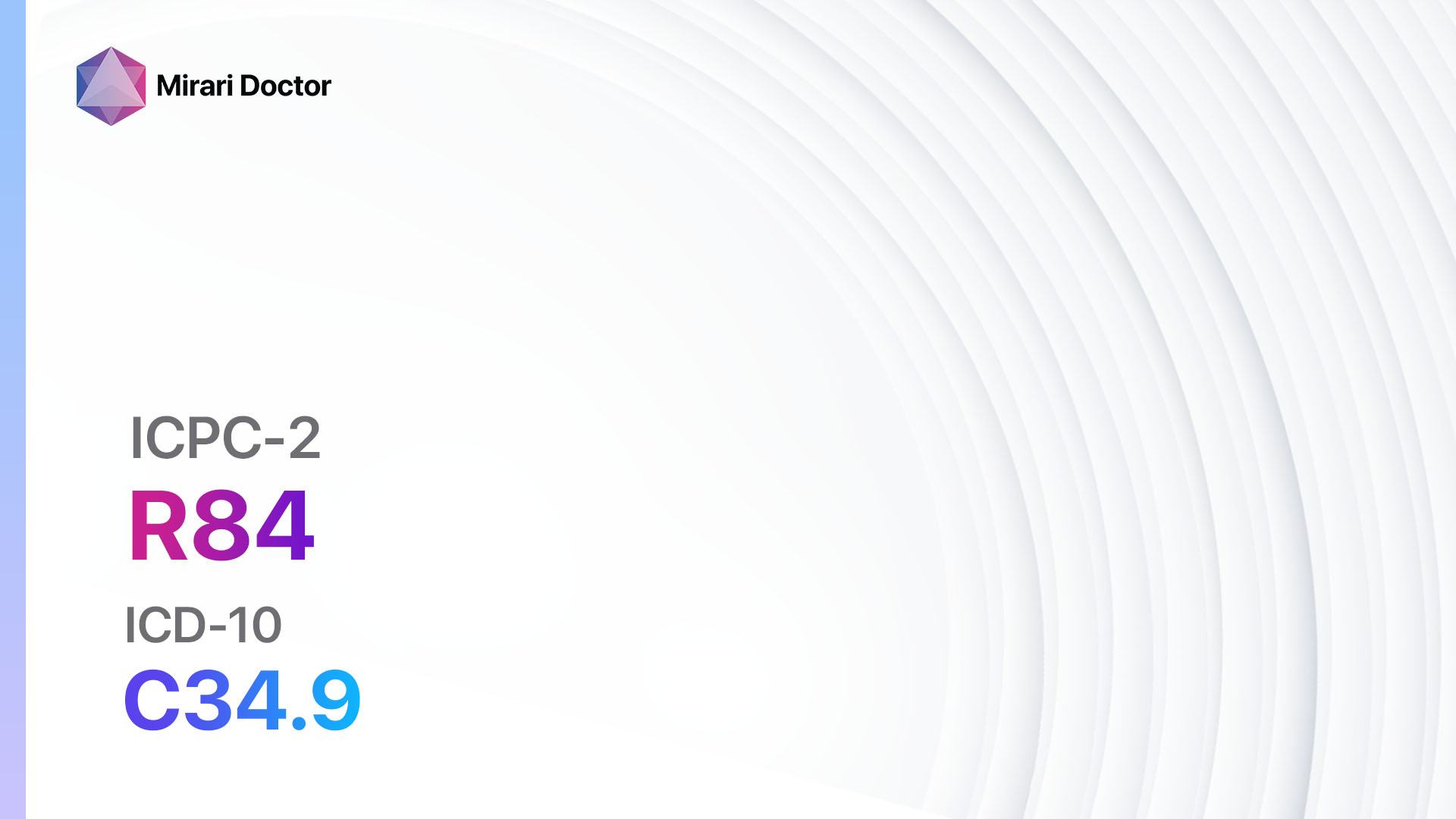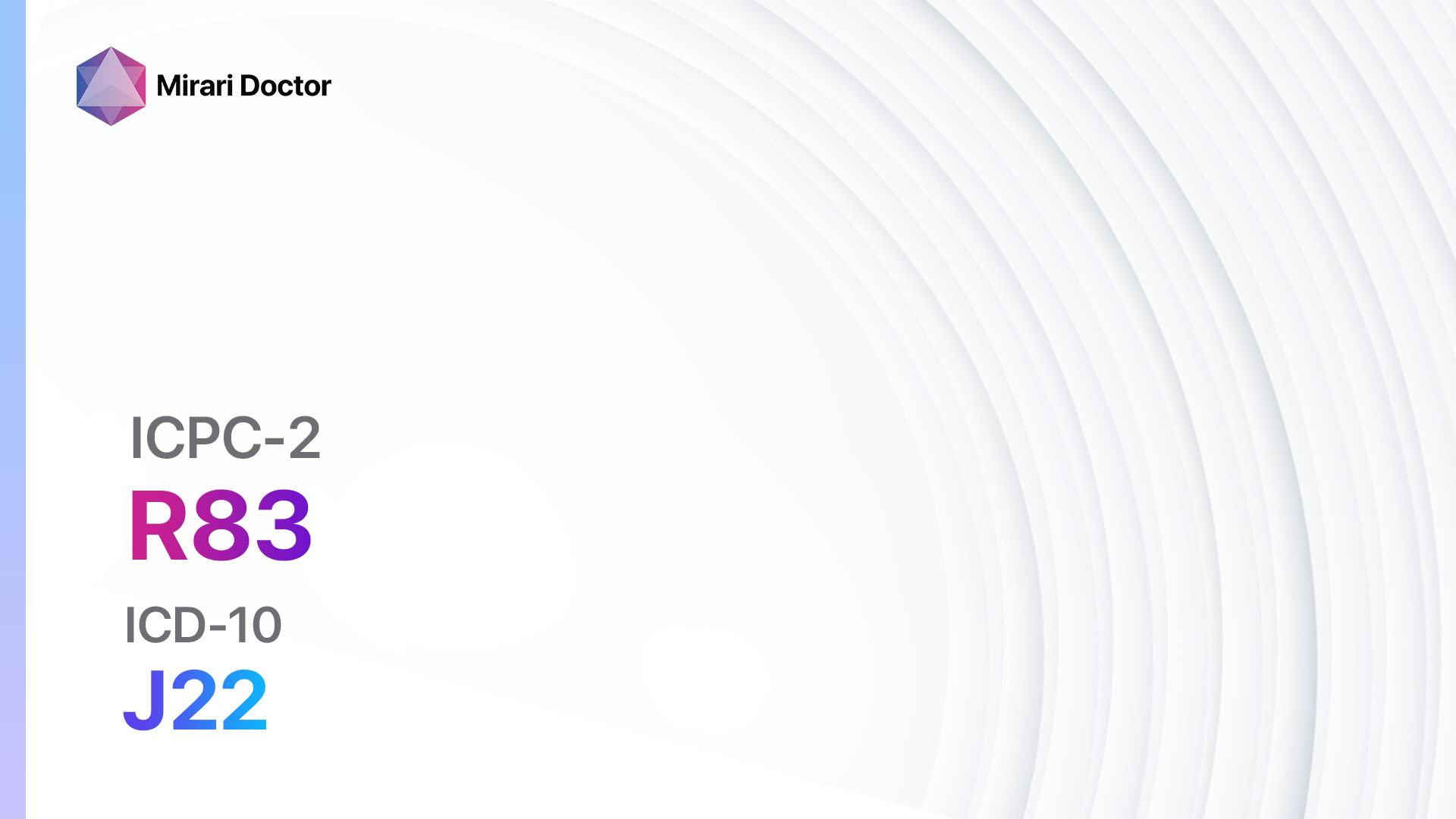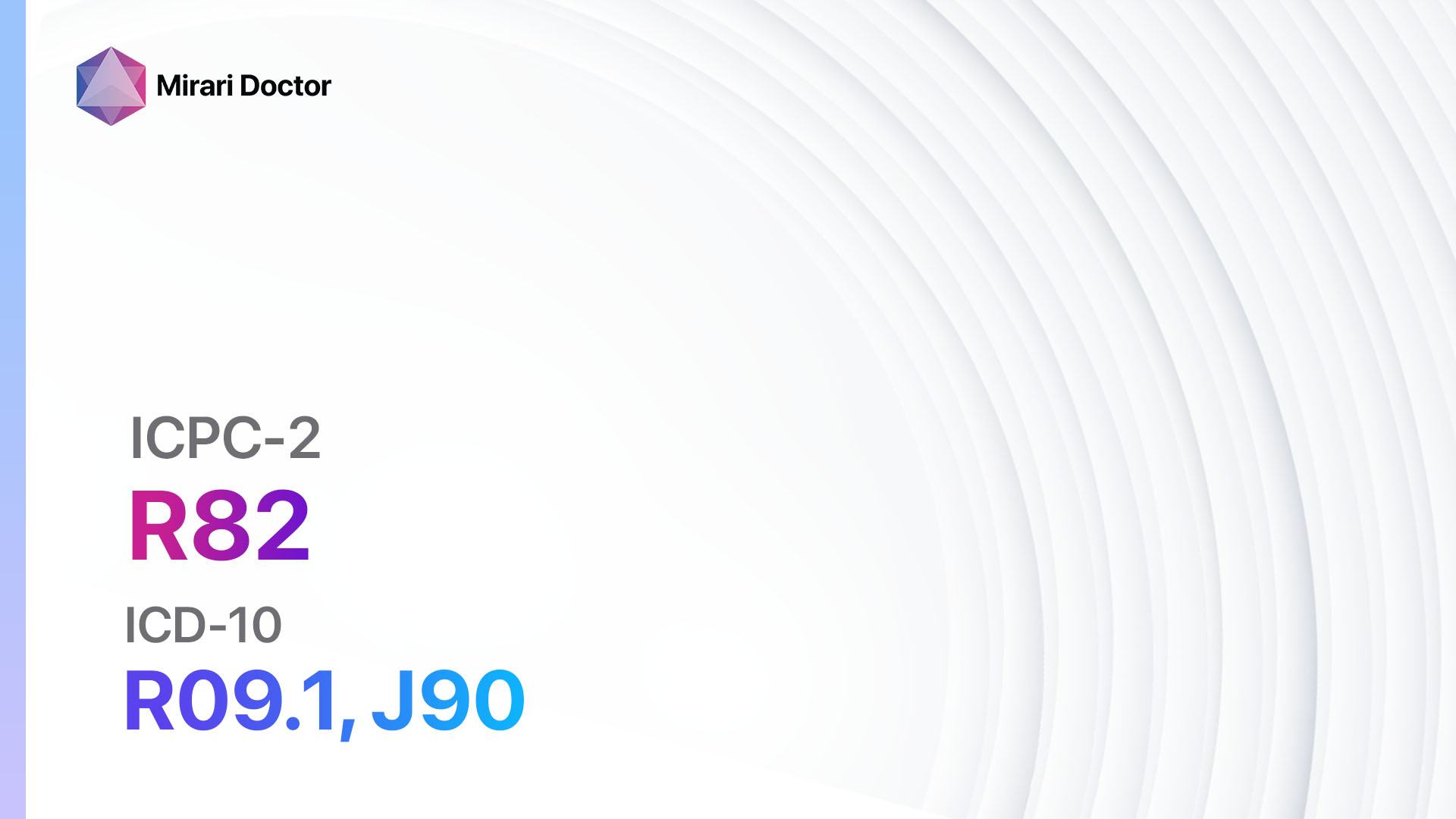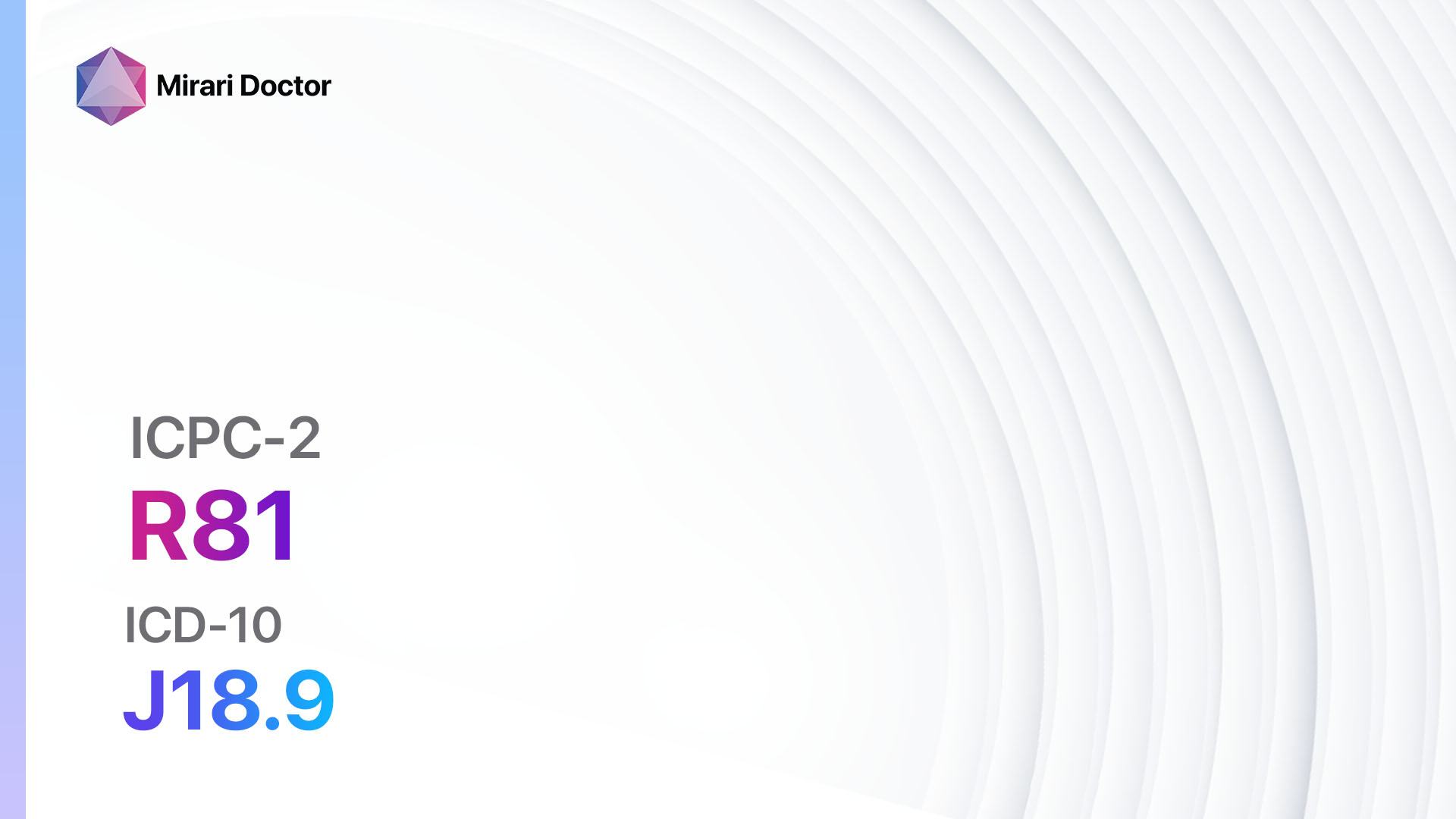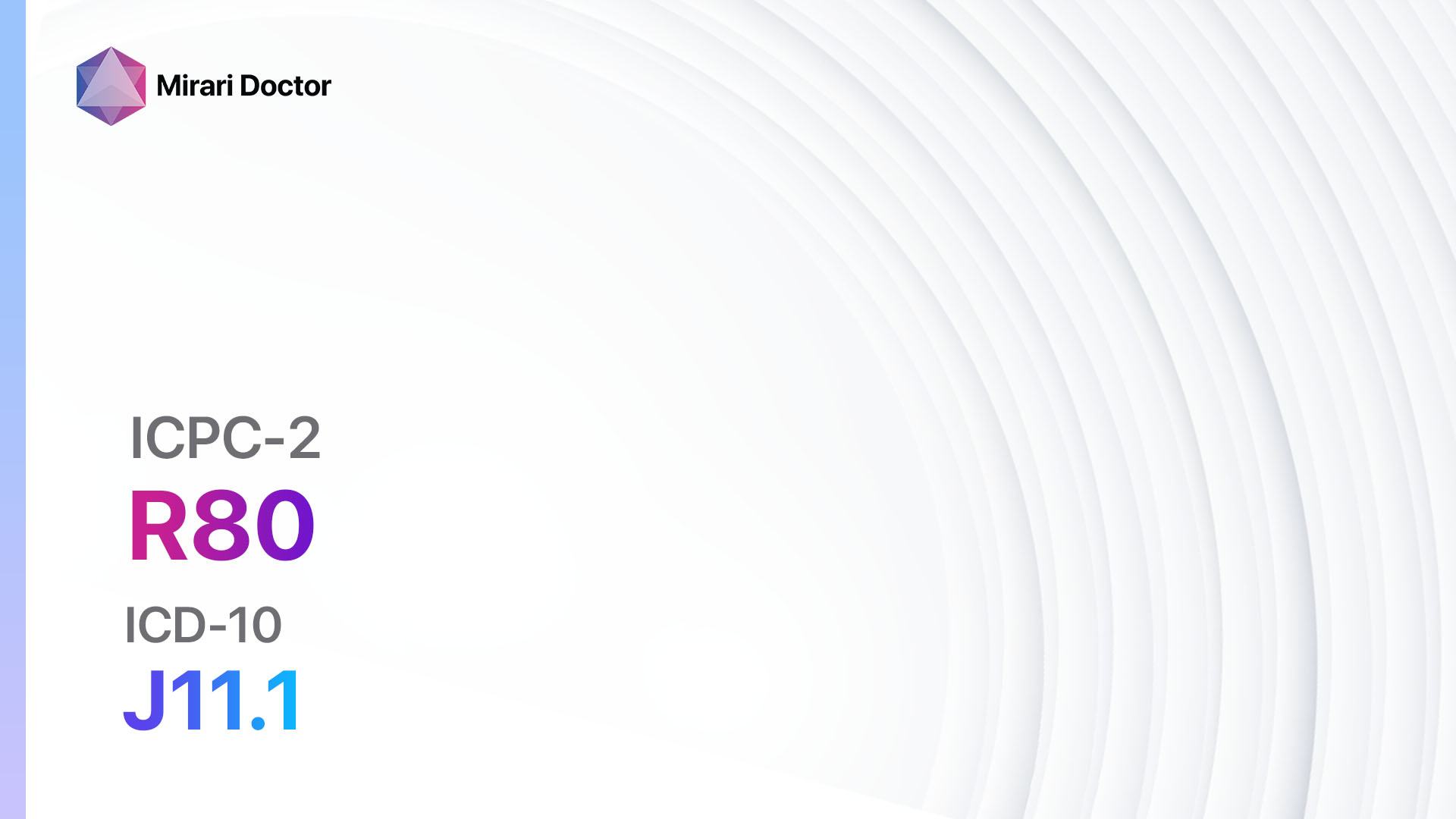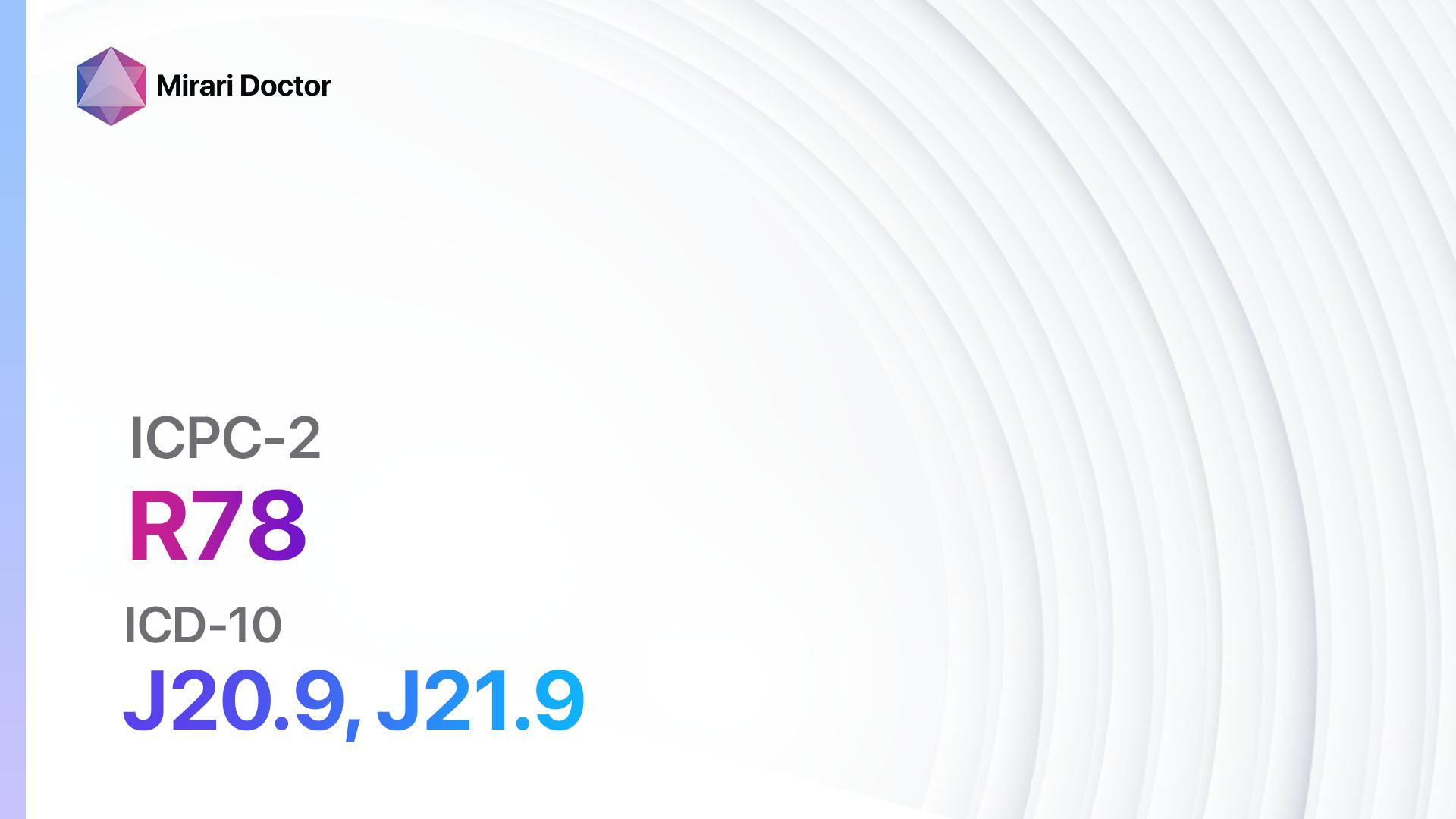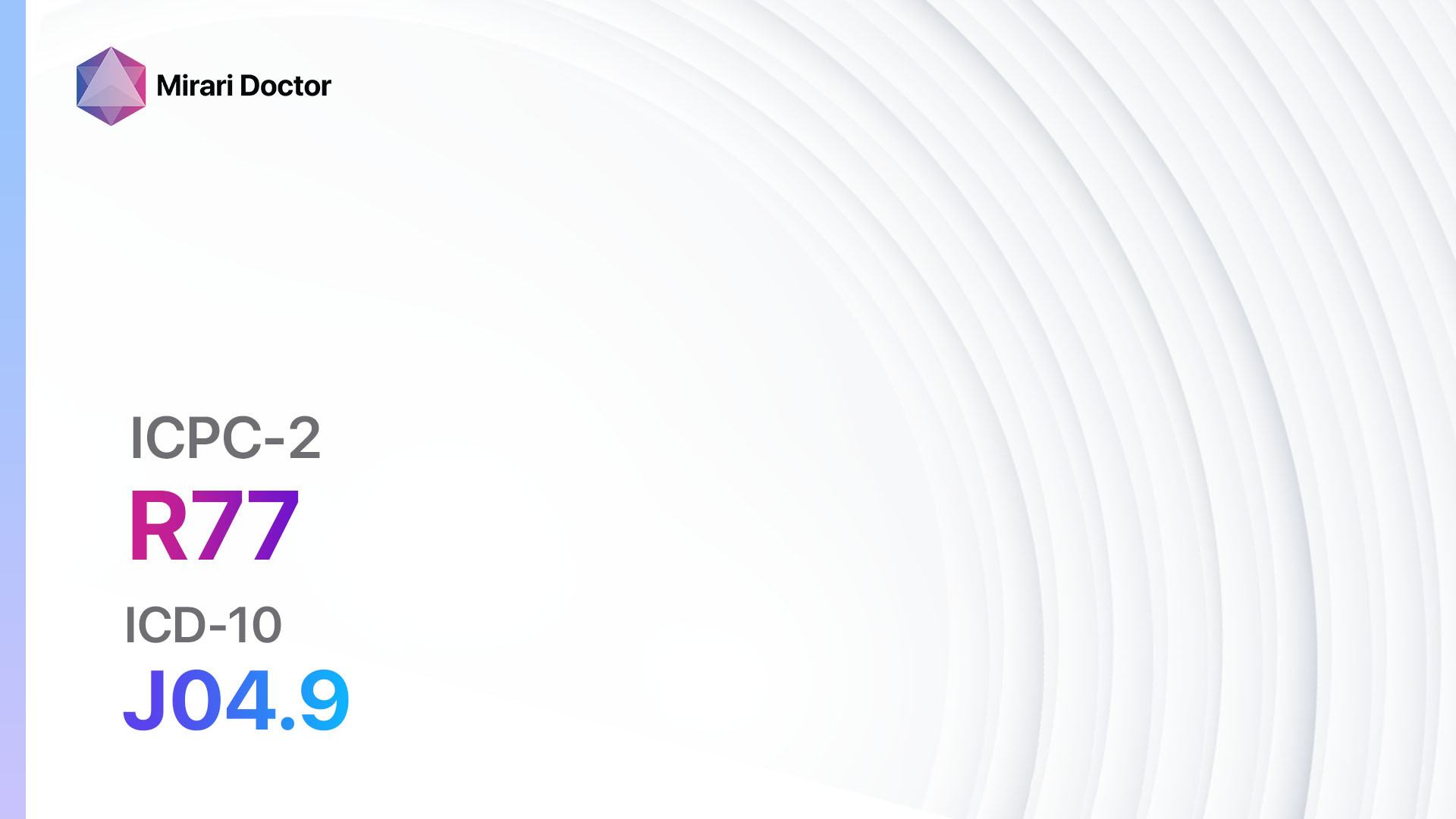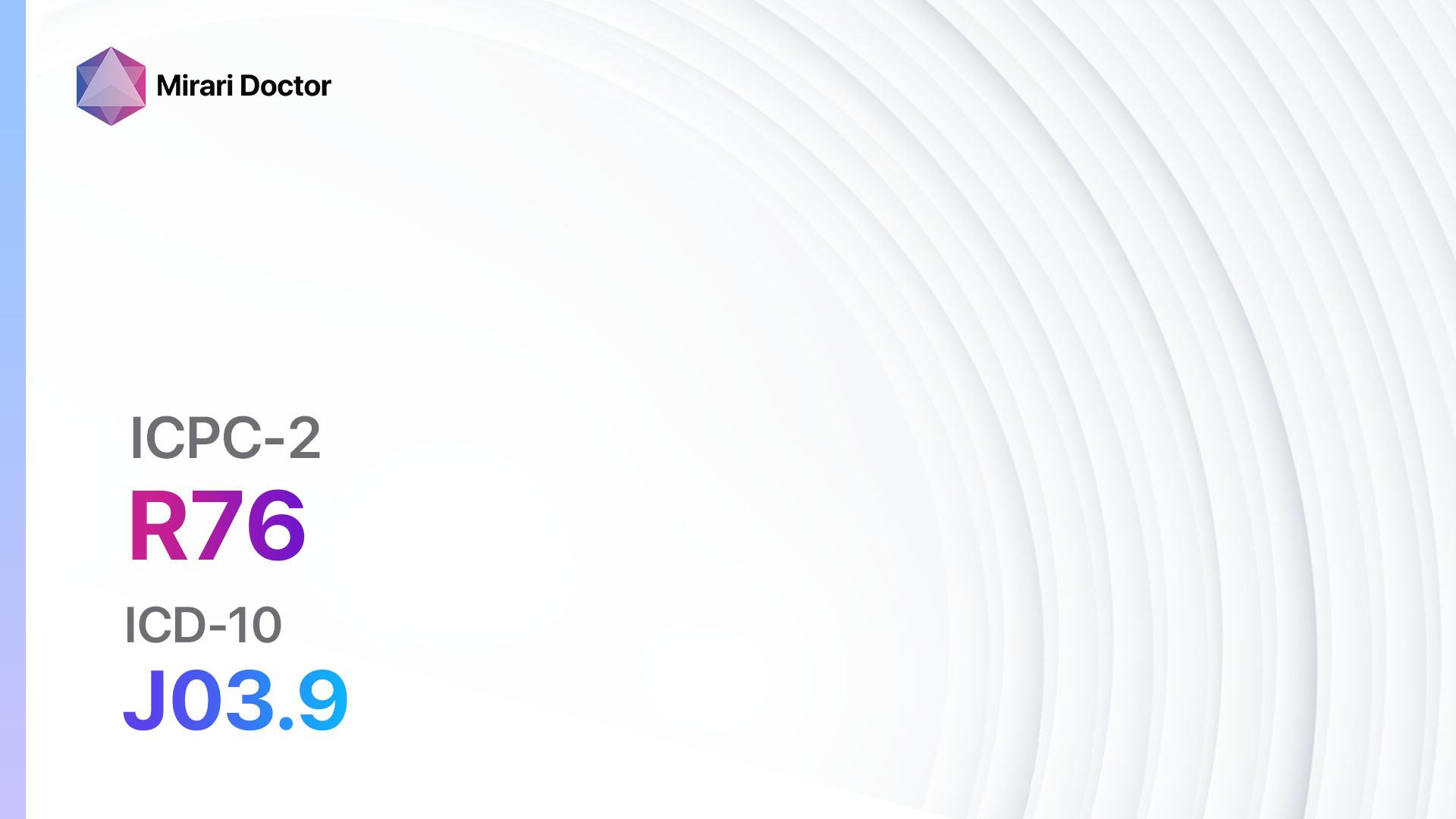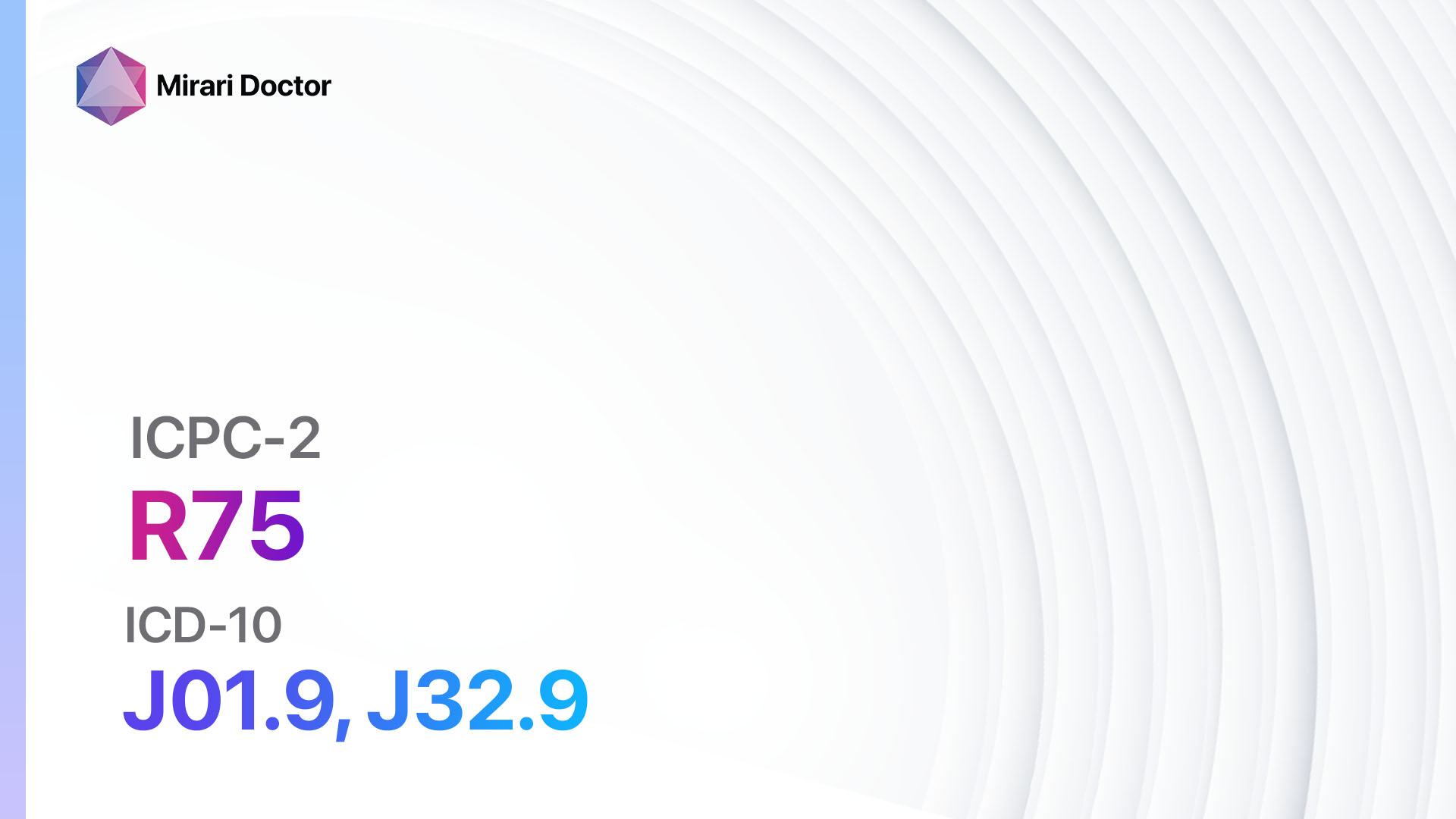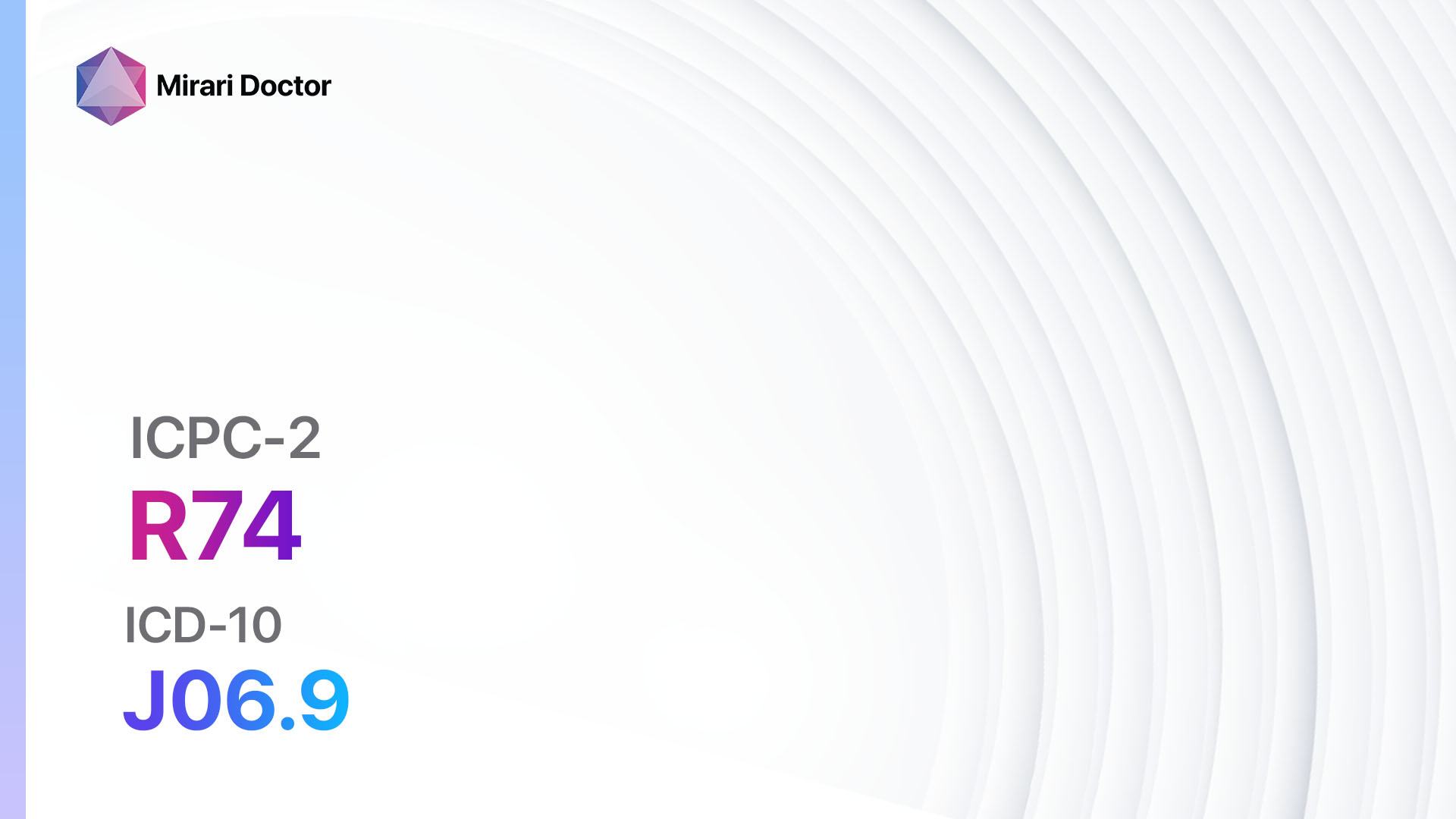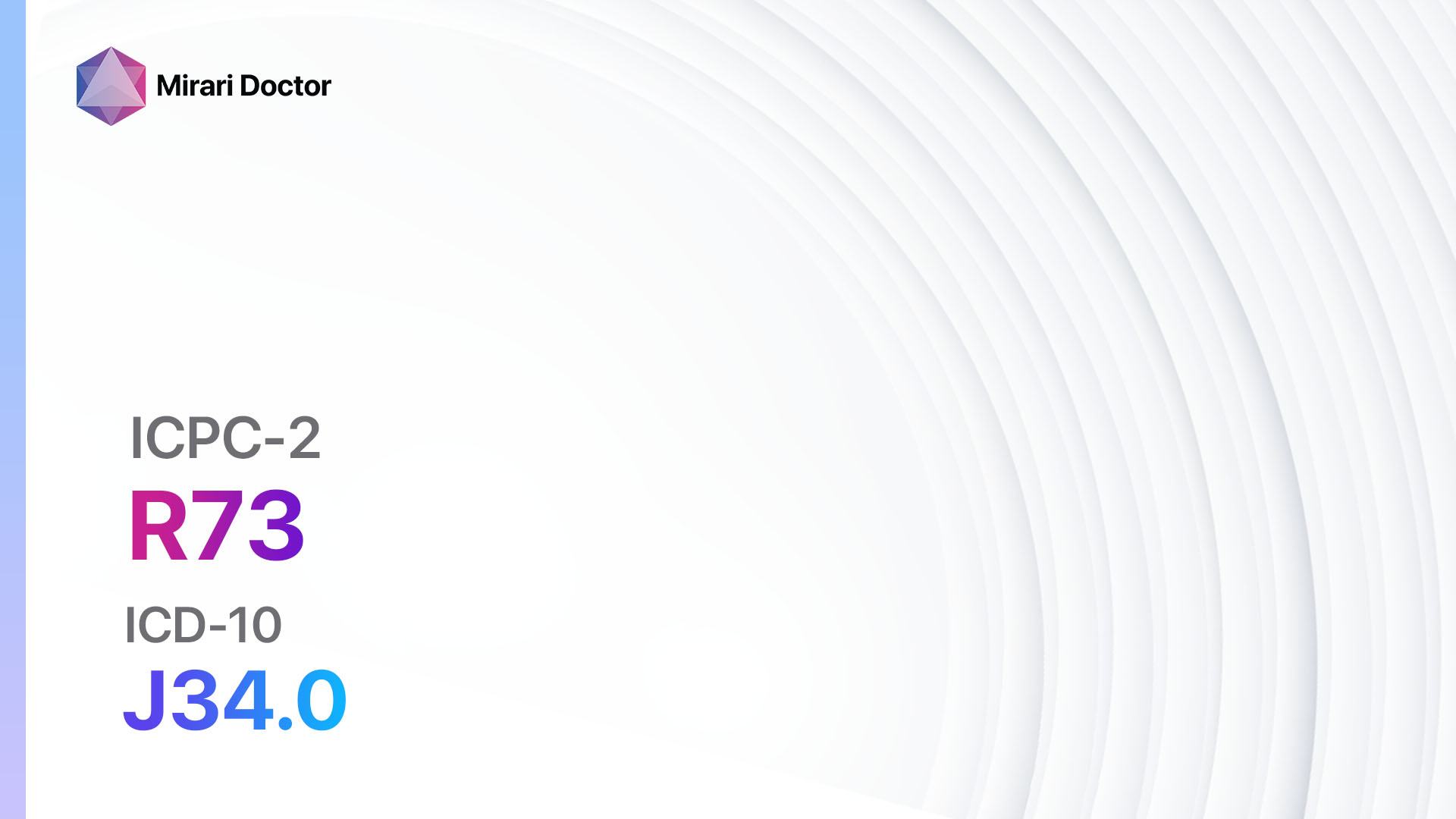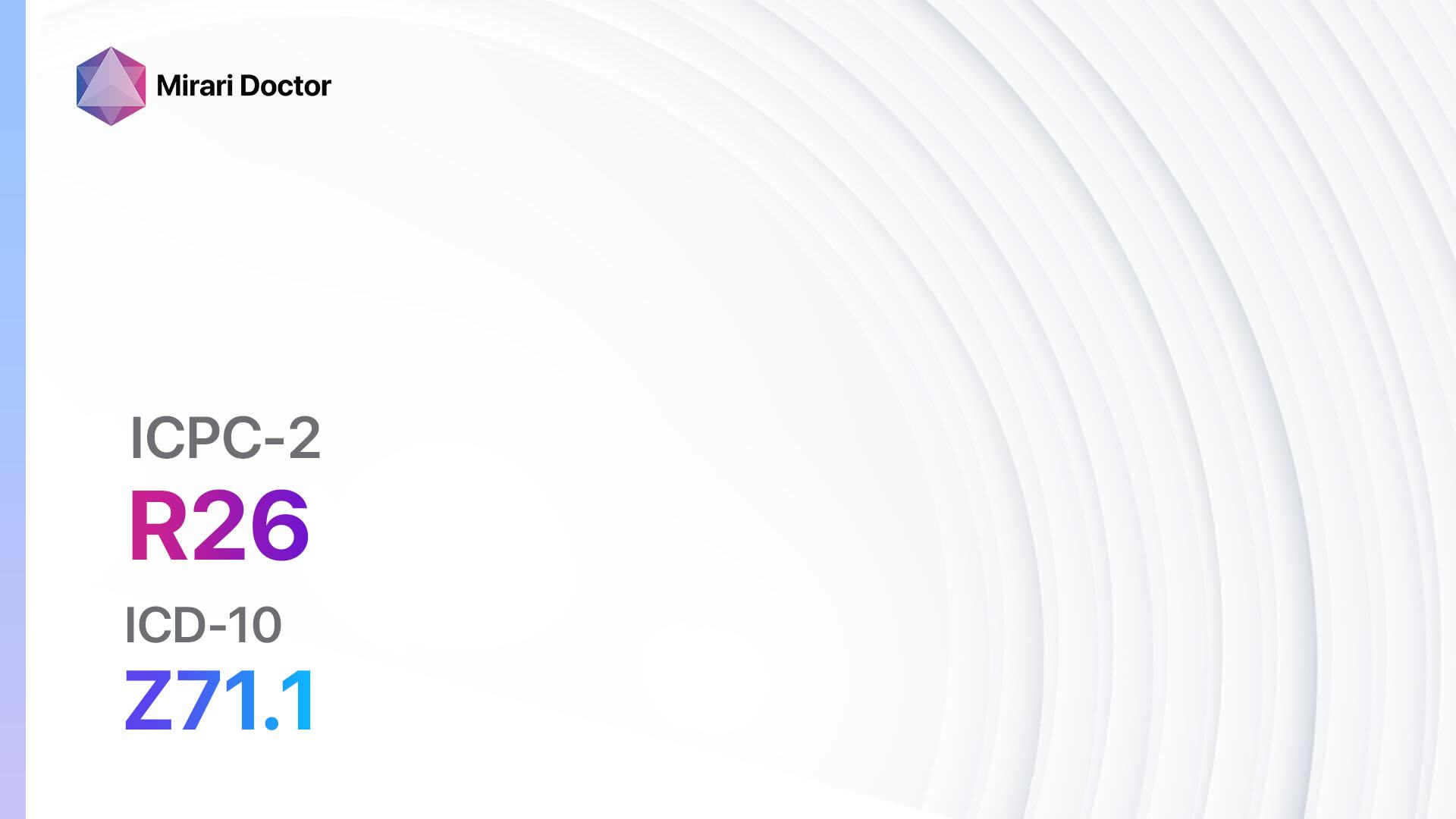
Introduction
Fear of cancer in the respiratory system is a common concern among individuals, as respiratory cancers can have serious consequences. This guide aims to provide healthcare professionals with a comprehensive approach to diagnosing and managing this fear. By understanding the symptoms, causes, and diagnostic steps associated with respiratory cancers, healthcare professionals can effectively address patient concerns and provide appropriate interventions.
Codes
- ICPC-2 Code: R26 Fear of cancer respiratory system
- ICD-10 Code: Z71.1 Person with feared complaint in whom no diagnosis is made
Symptoms
- Persistent cough: A chronic cough that lasts for more than a few weeks[1]
- Shortness of breath: Difficulty breathing or a feeling of breathlessness[2]
- Chest pain: Discomfort or pain in the chest area
- Unexplained weight loss: Significant weight loss without a known cause
- Fatigue: Feeling tired or lacking energy
- Hemoptysis: Coughing up blood or blood-stained mucus[3]
Causes
- Smoking: The leading cause of respiratory cancers, particularly lung cancer[4]
- Exposure to carcinogens: Inhalation of substances such as asbestos, radon, or certain chemicals
- Family history: A family history of respiratory cancers may increase the risk
- Environmental factors: Air pollution or exposure to secondhand smoke[5]
Diagnostic Steps
Medical History
- Gather information about the patient’s smoking history, including duration and intensity.
- Inquire about occupational exposure to carcinogens or other environmental factors.
- Assess the patient’s family history of respiratory cancers.
- Ask about the presence of symptoms such as persistent cough, shortness of breath, or chest pain[6]
Physical Examination
- Auscultate the lungs for abnormal breath sounds or wheezing.
- Palpate the chest area for any lumps or masses.
- Check for enlarged lymph nodes in the neck or supraclavicular area.
- Assess the patient’s general appearance and signs of weight loss or fatigue[7]
Laboratory Tests
- Complete blood count (CBC): To assess for anemia or infection.
- Pulmonary function tests (PFTs): Measures lung capacity and function.
- Tumor markers: Blood tests to detect specific markers associated with respiratory cancers.
- Sputum cytology: Examination of sputum for abnormal cells[8]
Diagnostic Imaging
- Chest X-ray: To evaluate the lungs and detect any abnormalities.
- Computed tomography (CT) scan: Provides detailed images of the lungs and surrounding structures.
- Magnetic resonance imaging (MRI): May be used to further evaluate suspicious findings.
- Positron emission tomography (PET) scan: Helps determine the extent of cancer spread[9]
Other Tests
- Bronchoscopy: A procedure to visualize the airways and collect tissue samples for biopsy.
- Biopsy: Removal of a small tissue sample for examination under a microscope.
- Fine-needle aspiration (FNA): Extraction of cells or fluid from a suspicious area for analysis.
- Genetic testing: Assessing for specific gene mutations associated with respiratory cancers[10]
Follow-up and Patient Education
- Provide the patient with a clear explanation of the diagnostic process and the rationale behind each test.
- Address any concerns or fears the patient may have regarding the diagnosis.
- Offer emotional support and encourage the patient to seek counseling or support groups if needed.
- Schedule follow-up appointments to discuss test results and further management options.
Possible Interventions
Traditional Interventions
Medications:
Top 5 drugs for respiratory cancers:
- Chemotherapy (e.g., Paclitaxel, Cisplatin):
- Cost: Varies depending on the specific drugs and treatment regimen.
- Contraindications: Severe kidney or liver dysfunction, pre-existing hearing loss.
- Side effects: Nausea, vomiting, hair loss, fatigue.
- Severe side effects: Bone marrow suppression, neuropathy, kidney damage.
- Drug interactions: Many potential drug interactions, including other chemotherapy agents.
- Warning: Requires close monitoring of blood counts and organ function.
- Targeted therapy (e.g., Erlotinib, Crizotinib):
- Cost: Varies depending on the specific drugs and treatment regimen.
- Contraindications: Severe liver dysfunction, pre-existing lung disease.
- Side effects: Diarrhea, skin rash, fatigue.
- Severe side effects: Interstitial lung disease, liver toxicity.
- Drug interactions: Many potential drug interactions, including other targeted therapies.
- Warning: Requires regular monitoring of liver function and lung symptoms.
- Immunotherapy (e.g., Pembrolizumab, Nivolumab):
- Cost: Varies depending on the specific drugs and treatment regimen.
- Contraindications: Severe autoimmune disease, organ transplant.
- Side effects: Fatigue, skin rash, diarrhea.
- Severe side effects: Pneumonitis, colitis, endocrine dysfunction.
- Drug interactions: Many potential drug interactions, including other immunosuppressive agents.
- Warning: Requires close monitoring of immune-related adverse events.
- Radiation therapy:
- Cost: Varies depending on the treatment duration and facility.
- Contraindications: Pregnancy, severe lung disease.
- Side effects: Fatigue, skin changes, difficulty swallowing.
- Severe side effects: Radiation pneumonitis, esophagitis.
- Drug interactions: None.
- Warning: Requires careful planning and monitoring to minimize side effects.
- Surgery (e.g., Lobectomy, Pneumonectomy):
- Cost: Varies depending on the specific procedure and facility.
- Contraindications: Severe comorbidities, advanced disease stage.
- Side effects: Pain, infection, bleeding.
- Severe side effects: Pneumonia, respiratory failure.
- Drug interactions: None.
- Warning: Requires careful preoperative evaluation and postoperative care.
Alternative Drugs:
- Herbal supplements: Some herbal supplements, such as turmeric or green tea extract, may have potential benefits in reducing inflammation and supporting overall health. Cost: Varies depending on the specific supplement.
- Vitamin D: Adequate vitamin D levels have been associated with improved outcomes in respiratory cancers. Cost: Varies depending on the specific supplement.
- Omega-3 fatty acids: May have anti-inflammatory properties and support overall health. Cost: Varies depending on the specific supplement.
- Melatonin: Some studies suggest that melatonin may have anticancer effects. Cost: Varies depending on the specific supplement.
- Mistletoe extract: Used in some complementary cancer treatments, mistletoe extract may have immune-stimulating properties. Cost: Varies depending on the specific product.
Surgical Procedures:
- Lung resection: Removal of a portion of the lung affected by cancer. Cost: Varies depending on the specific procedure and facility.
- Lymph node dissection: Removal of nearby lymph nodes to assess for cancer spread. Cost: Varies depending on the specific procedure and facility.
- Pleurodesis: A procedure to prevent the buildup of fluid in the pleural space. Cost: Varies depending on the specific procedure and facility.
- Tracheostomy: Creation of an opening in the neck to assist with breathing. Cost: Varies depending on the specific procedure and facility.
- Palliative procedures: Various procedures aimed at improving symptoms and quality of life. Cost: Varies depending on the specific procedure and facility.
Alternative Interventions
- Acupuncture: May help alleviate symptoms such as pain, nausea, and fatigue. Cost: $60-$120 per session.
- Meditation: Can help reduce anxiety and improve overall well-being. Cost: Free to minimal cost.
- Yoga: May improve flexibility, strength, and overall quality of life. Cost: Varies depending on the location and instructor, typically $10-$20 per session.
- Massage therapy: Can help reduce muscle tension and promote relaxation. Cost: $50-$100 per session.
- Mindfulness-based stress reduction: A structured program that combines meditation, yoga, and mindfulness techniques. Cost: Varies depending on the location and instructor, typically $200-$500 for an 8-week program.
Lifestyle Interventions
- Smoking cessation: Quitting smoking is crucial in reducing the risk of respiratory cancers. Cost: Varies depending on the method chosen, but can range from free (self-help resources) to several hundred dollars (nicotine replacement therapy or prescription medications).
- Healthy diet: Encourage a diet rich in fruits, vegetables, whole grains, and lean proteins. Cost: Varies depending on food choices, but can be comparable to a regular diet.
- Regular exercise: Engaging in regular physical activity can improve overall health and reduce the risk of cancer. Cost: Varies depending on the chosen activity, but can range from free (walking or jogging) to gym memberships or fitness classes.
- Stress management: Encourage stress-reducing activities such as meditation, deep breathing exercises, or hobbies. Cost: Free to minimal cost.
- Avoidance of environmental toxins: Educate patients on the importance of avoiding exposure to secondhand smoke, air pollution, and occupational carcinogens. Cost: Varies depending on the specific circumstances, but may involve lifestyle changes or protective equipment.
It is important to note that the cost ranges provided are approximate and may vary depending on the location and availability of the interventions. Healthcare professionals should consider individual patient preferences, financial constraints, and local resources when recommending interventions.
Mirari Cold Plasma Alternative Intervention
Understanding Mirari Cold Plasma
- Safe and Non-Invasive Treatment: Mirari Cold Plasma is a safe and non-invasive treatment option for various skin conditions. It does not require incisions, minimizing the risk of scarring, bleeding, or tissue damage.
- Efficient Extraction of Foreign Bodies: Mirari Cold Plasma facilitates the removal of foreign bodies from the skin by degrading and dissociating organic matter, allowing easier access and extraction.
- Pain Reduction and Comfort: Mirari Cold Plasma has a local analgesic effect, providing pain relief during the treatment, making it more comfortable for the patient.
- Reduced Risk of Infection: Mirari Cold Plasma has antimicrobial properties, effectively killing bacteria and reducing the risk of infection.
- Accelerated Healing and Minimal Scarring: Mirari Cold Plasma stimulates wound healing and tissue regeneration, reducing healing time and minimizing the formation of scars.
Mirari Cold Plasma Prescription
Video instructions for using Mirari Cold Plasma Device – R26 Fear of cancer respiratory system (ICD-10:Z71.1)
| Mild | Moderate | Severe |
| Mode setting: 1 (Infection) Location: 6 (Throat, Lymphatic & Thyroid) Morning: 15 minutes, Evening: 15 minutes |
Mode setting: 1 (Infection) Location: 6 (Throat, Lymphatic & Thyroid) Morning: 30 minutes, Lunch: 30 minutes, Evening: 30 minutes |
Mode setting: 1 (Infection) Location: 6 (Throat, Lymphatic & Thyroid) Morning: 30 minutes, Lunch: 30 minutes, Evening: 30 minutes |
| Mode setting: 2 (Wound Healing) Location: 6 (Throat, Lymphatic & Thyroid) Morning: 15 minutes, Evening: 15 minutes |
Mode setting: 2 (Wound Healing) Location: 6 (Throat, Lymphatic & Thyroid) Morning: 30 minutes, Lunch: 30 minutes, Evening: 30 minutes |
Mode setting: 2 (Wound Healing) Location: 6 (Throat, Lymphatic & Thyroid) Morning: 30 minutes, Lunch: 30 minutes, Evening: 30 minutes |
| Total Morning: 30 minutes approx. $5 USD, Evening: 30 minutes approx. $5 USD |
Total Morning: 60 minutes approx. $10 USD, Lunch: 60 minutes approx. $10 USD, Evening: 60 minutes approx. $10 USD, |
Total Morning: 60 minutes approx. $10 USD, Lunch: 60 minutes approx. $10 USD, Evening: 60 minutes approx. $10 USD, |
| Usual treatment for 7-60 days approx. $70 USD – $600 USD | Usual treatment for 6-8 weeks approx. $1,260 USD – $1,680 USD |
Usual treatment for 3-6 months approx. $2,700 USD – $5,400 USD
|
 |
|
Use the Mirari Cold Plasma device to treat Fear of cancer respiratory system effectively.
WARNING: MIRARI COLD PLASMA IS DESIGNED FOR THE HUMAN BODY WITHOUT ANY ARTIFICIAL OR THIRD PARTY PRODUCTS. USE OF OTHER PRODUCTS IN COMBINATION WITH MIRARI COLD PLASMA MAY CAUSE UNPREDICTABLE EFFECTS, HARM OR INJURY. PLEASE CONSULT A MEDICAL PROFESSIONAL BEFORE COMBINING ANY OTHER PRODUCTS WITH USE OF MIRARI.
Step 1: Cleanse the Skin
- Start by cleaning the affected area of the skin with a gentle cleanser or mild soap and water. Gently pat the area dry with a clean towel.
Step 2: Prepare the Mirari Cold Plasma device
- Ensure that the Mirari Cold Plasma device is fully charged or has fresh batteries as per the manufacturer’s instructions. Make sure the device is clean and in good working condition.
- Switch on the Mirari device using the power button or by following the specific instructions provided with the device.
- Some Mirari devices may have adjustable settings for intensity or treatment duration. Follow the manufacturer’s instructions to select the appropriate settings based on your needs and the recommended guidelines.
Step 3: Apply the Device
- Place the Mirari device in direct contact with the affected area of the skin. Gently glide or hold the device over the skin surface, ensuring even coverage of the area experiencing.
- Slowly move the Mirari device in a circular motion or follow a specific pattern as indicated in the user manual. This helps ensure thorough treatment coverage.
Step 4: Monitor and Assess:
- Keep track of your progress and evaluate the effectiveness of the Mirari device in managing your Fear of cancer respiratory system. If you have any concerns or notice any adverse reactions, consult with your health care professional.
Note
This guide is for informational purposes only and should not replace the advice of a medical professional. Always consult with your healthcare provider or a qualified medical professional for personal advice, diagnosis, or treatment. Do not solely rely on the information presented here for decisions about your health. Use of this information is at your own risk. The authors of this guide, nor any associated entities or platforms, are not responsible for any potential adverse effects or outcomes based on the content.
Mirari Cold Plasma System Disclaimer
- Purpose: The Mirari Cold Plasma System is a Class 2 medical device designed for use by trained healthcare professionals. It is registered for use in Thailand and Vietnam. It is not intended for use outside of these locations.
- Informational Use: The content and information provided with the device are for educational and informational purposes only. They are not a substitute for professional medical advice or care.
- Variable Outcomes: While the device is approved for specific uses, individual outcomes can differ. We do not assert or guarantee specific medical outcomes.
- Consultation: Prior to utilizing the device or making decisions based on its content, it is essential to consult with a Certified Mirari Tele-Therapist and your medical healthcare provider regarding specific protocols.
- Liability: By using this device, users are acknowledging and accepting all potential risks. Neither the manufacturer nor the distributor will be held accountable for any adverse reactions, injuries, or damages stemming from its use.
- Geographical Availability: This device has received approval for designated purposes by the Thai and Vietnam FDA. As of now, outside of Thailand and Vietnam, the Mirari Cold Plasma System is not available for purchase or use.
References
- Fahy JV, Dickey BF. Airway mucus function and dysfunction. N Engl J Med. 2010;363(23):2233-2247.
- Parshall MB, Schwartzstein RM, Adams L, et al. An official American Thoracic Society statement: update on the mechanisms, assessment, and management of dyspnea. Am J Respir Crit Care Med. 2012;185(4):435-452.
- Weinberger SE, Cockrill BA, Mandel J. Principles of Pulmonary Medicine. 7th ed. Elsevier; 2019.
- U.S. Department of Health and Human Services. The Health Consequences of Smoking—50 Years of Progress: A Report of the Surgeon General. Atlanta: U.S. Department of Health and Human Services, Centers for Disease Control and Prevention, National Center for Chronic Disease Prevention and Health Promotion, Office on Smoking and Health, 2014.
- Raaschou-Nielsen O, Andersen ZJ, Beelen R, et al. Air pollution and lung cancer incidence in 17 European cohorts: prospective analyses from the European Study of Cohorts for Air Pollution Effects (ESCAPE). Lancet Oncol. 2013;14(9):813-822.
- National Comprehensive Cancer Network. NCCN Clinical Practice Guidelines in Oncology: Non-Small Cell Lung Cancer. Version 3.2022.
- Gould MK, Donington J, Lynch WR, et al. Evaluation of individuals with pulmonary nodules: when is it lung cancer? Diagnosis and management of lung cancer, 3rd ed: American College of Chest Physicians evidence-based clinical practice guidelines. Chest. 2013;143(5 Suppl):e93S-e120S.
- Rivera MP, Mehta AC, Wahidi MM. Establishing the diagnosis of lung cancer: Diagnosis and management of lung cancer, 3rd ed: American College of Chest Physicians evidence-based clinical practice guidelines. Chest. 2013;143(5 Suppl):e142S-e165S.
- National Lung Screening Trial Research Team, Aberle DR, Adams AM, et al. Reduced lung-cancer mortality with low-dose computed tomographic screening. N Engl J Med. 2011;365(5):395-409.
- Lindeman NI, Cagle PT, Aisner DL, et al. Updated Molecular Testing Guideline for the Selection of Lung Cancer Patients for Treatment With Targeted Tyrosine Kinase Inhibitors: Guideline From the College of American Pathologists, the International Association for the Study of Lung Cancer, and the Association for Molecular Pathology. J Thorac Oncol. 2018;13(3):323-358.
Related articles
Made in USA


